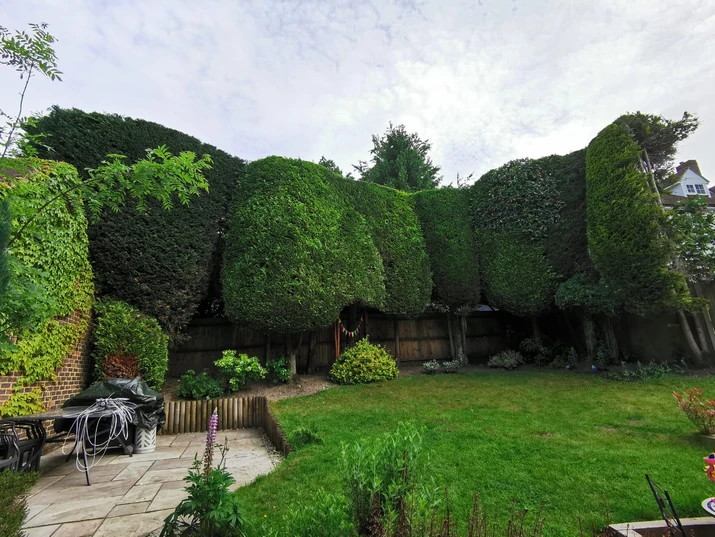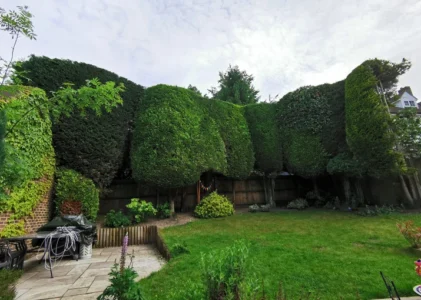What is the ideal time to trim a hedge, how should it be done, and when should it be done?
Hedging is crucial for biodiversity. For instance, birds adore using them as nesting sites. Regulating when to work on hedges and when to leave them alone makes for logical thinking. Rules governing hedge trimming and removal are what aid in coordinating this effort on a municipal level. Depending on the specifics of the local environment, any nation, state, and even municipality may have its own set of laws. Also, such initiatives are frequently a sign of a developed community that can consider, the value of safeguarding nature as it conducts its daily activities.
A hedge typically needs only occasional maintenance—at most, cutting once or twice a year—and is frequently used to demarcate property lines or to simply fence off specific areas of the garden.
To avoid dead or dying branches hurting nearby plants or humans, hedges should be pruned regularly. You can promote the blooming of the hedge’s flowers or fruits by eliminating these branches. Pruning, in contrast to maintenance trimming, is done to accelerate the growth of the hedge rather than to slow it down. Removing branches that are infected with pests or disease is another reason why gardeners prune their hedges.
When should I cut my hedges?
Hedges are typically made from shrubs with two vegetational phases per year—one in the spring and one towards the end of the summer.
To ensure that the form you give them will last for a longer amount of time, it is best to wait for these growth stages to slow down.
So, from the perspective of the plant, hedges require trimming in April–May and September–October.
Yet, this coincides with bird nesting seasons in the spring.
As a result, you should prune much earlier in the spring; since birds aren’t yet laying eggs, early March and even February are ideal.
Hedges can be trimmed more frequently to control growth more accurately. One type of plant where constant trimming is required is topiary.
Wait until the flowering has finished, on hedges with flowers, before pruning.
The greatest time to dramatically reduce the size of your hedge is very early in the spring, around the end of February or beginning of March.
Your shrubs will have the best chance of coming back lush and dense if you do this.
Methods for trimming a hedge
A well-trimmed hedge is easier to maintain over time, ensuring enough density to stay opaque and promoting hedge development.
Trim the base to be wider than the tip.
All of the shrubs that are a part of the hedge benefit from this light.
For improved precision and a lighter workload, use an electric or gas-powered hedge trimmer for hedges taller than 16 feet (5 metres).
On the larger branches, use pruners.
Shears are more precise, which is beneficial for smaller hedges.
Trees and shrubs that create effective hedges.
There are many different types of hedge shrubs, but some are especially well suited since they tolerate trimming well.
The ideal plants for hedges include strawberry tree, wild privet, weigela, cypress, camellia, photinia, and flowering currant.
- Start an evergreen hedge if you want to be green all year.
- Or design a hedge with flowers that bloom as the seasons change.
- Plant berry shrubs to entice birds.
- Develop your ability to build mixed hedges, which are excellent defences against illness and parasites.
Why get a professional to trim your hedges?
Impressing your patrons and visitors with well-kept outside spaces is essential to success, whether you own a school, recreation centre, retail store, or office building. Hedges and bushes that are overgrown will not aid in this endeavour; instead, they will make your property’s grounds appear unmaintained. On the other side, hedge pruning will keep your plants looking gorgeous!
If you believe your plants could use some TLC, don’t hesitate to schedule professional hedge trimming. Trimmed hedges may really improve the appearance of your grounds. It goes without saying that you’ll need other grounds maintenance options as well, such as tree service, landscaping, and gardening, to maintain your property looking its best. Having a professional in to take care of these jobs means you get a pristine look at the end of it without any worries about health and safety plus they have all the tools you need too.
To keep your commercial grounds in peak condition, protect your hedges against disease and prevent tree-related injury, make hedge trimming services part of your property maintenance schedule. With years of experience in the field and competitive rates, this is something Sevenoaks Tree Care can help with.


